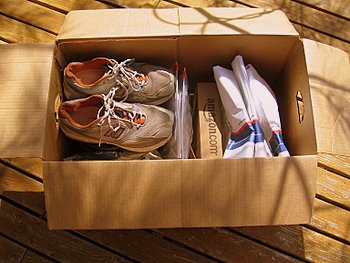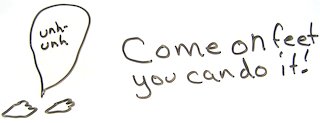In Northern California on the Pacific Crest Trail, there is a long hot exposed waterless stretch–Hat Creek Rim. In 2001, the guy at the store in Old Station knew how many hikers had come through and kept a water cache stocked with water mid-way through it. He would guarantee that there would be water for you at the cache, so even though water caches are usually of little use to me–because you can’t depend on them–and because they attract annoying needy people who do depend on them, I found that one useful.
The store owner either had moved on or wasn’t there to guarantee that there was any water in the cache last year, but there is a trail angel in Old Station. I didn’t go there because I just wanted to get my business taken care of and get back out on the trail. I met another hiker who was staying with the trail angel. He said that the trail angel asks that you not take much water from the cache.
“How much is ‘not much’?�? I asked.
“I don’t know�? he replied.
I decided that “not much�? probably meant 1 liter, so, I brought plenty of water–well, enough to get by.
Later, I met up with that other hiker. Apparently he took as much water as he wanted from the cache and he got someone to cache him even more water further up the trail. I suspect I was duped–that he was concerned that there wouldn’t be enough water for him so he told me to not take too much. It’s one of the many things I don’t like about water caches: the sense of scarcity they breed. About nine o’clock, I passed him camped on a nice savanna but I kept hiking because I was thirsty and wanted to make the water source before I camped.
When I finally reached the water source there wasn’t anywhere to camp, so, I hiked on. Then I came to a house; I hiked on further. Next, I came to a big power plant.
So, it’s like 11 o’clock at night and I have my 1 watt led shining all over this power plant trying to find the way. Something about power plants has always scared me. Power plants in the middle of the night and the night watch men who guard them, very scary stuff. I imagined there was a serial murdering, night watchman around or at least one of Bush’s minions aggressively protecting the power plant, but I made it through without meeting up with either.
I had to go past a lot of man made stuff. I was standing at an intersection, looking at my guidebook trying to decide which way to go when I skunk came from under a chain link fence and walked towards me. I shone my light on it, but it kept coming. Then it turned around and lifted its tail at me. I quickly chose a path and moved on.
I was still in the “No Camping�? zone when I came to a small lake. I was tired. I knew from when I hiked before that the lake would have fisherman around it come morning. I made camp, though. It was forest and the forest floor is often very buggy so I put up my tent.
Five the next morning, I was still tired but I knew I needed to get out of there. I packed up, moved 100 yards up the trail, laid out my pad, got into my sleeping bag and thought, “There, I’m not camping anymore. I’m just taking a break.�?
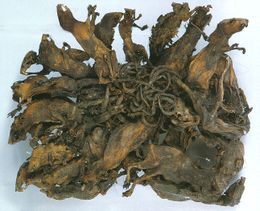
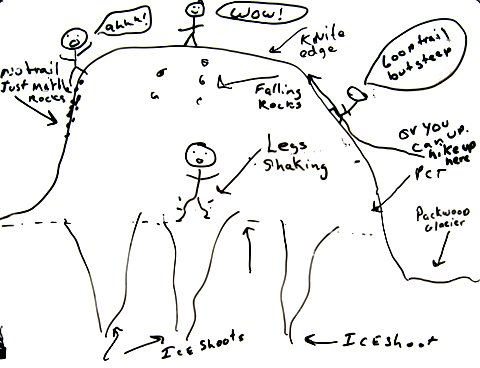
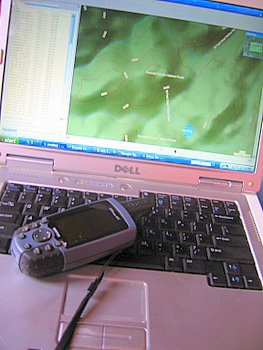 This is my GPS; it’s the Garmin 60c. It weighs 6.7 ounces(190 grams) with lithium batteries. I bought it in 2004 for hiking the Continental Divide Trail. Since I have it, I thought it might be fun to bring it on the Pacific Crest Trail(PCT) with me.
This is my GPS; it’s the Garmin 60c. It weighs 6.7 ounces(190 grams) with lithium batteries. I bought it in 2004 for hiking the Continental Divide Trail. Since I have it, I thought it might be fun to bring it on the Pacific Crest Trail(PCT) with me.